Visualizations atlas
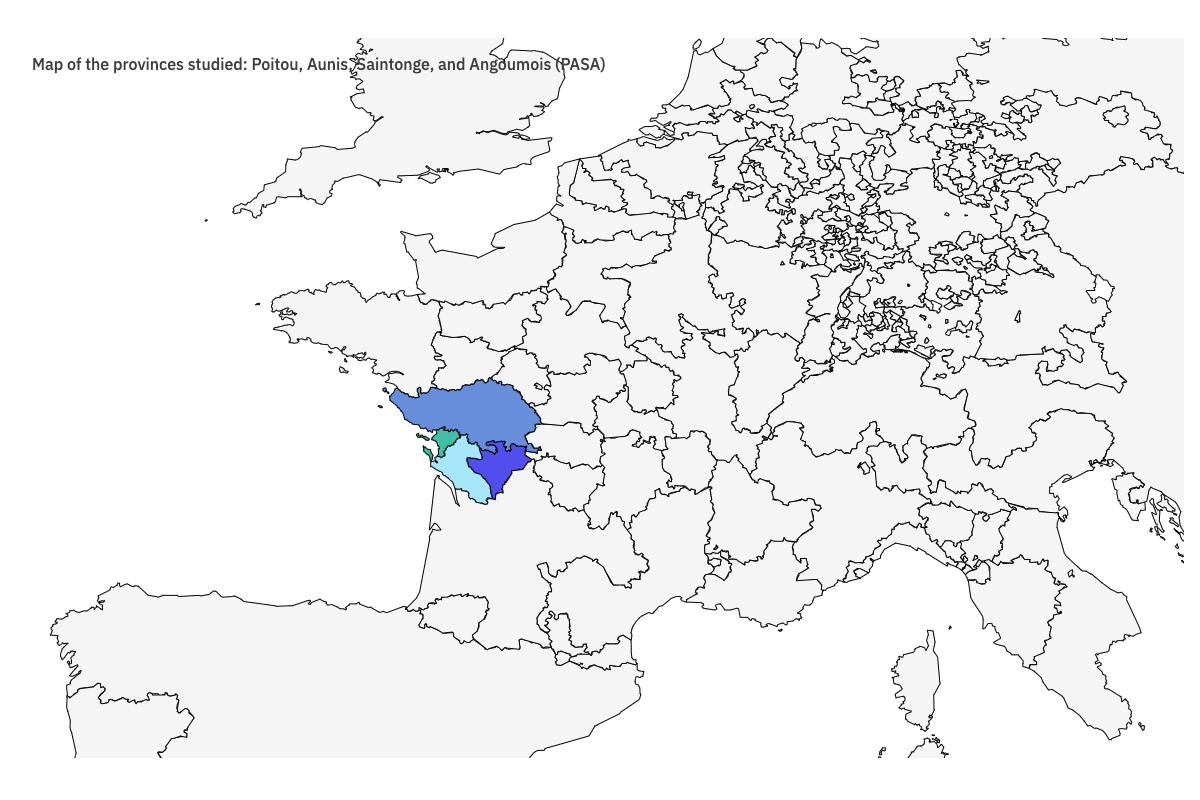
Map of the provinces investigated : Poitou, Aunis, Saintonge, Angoumois (PASA)
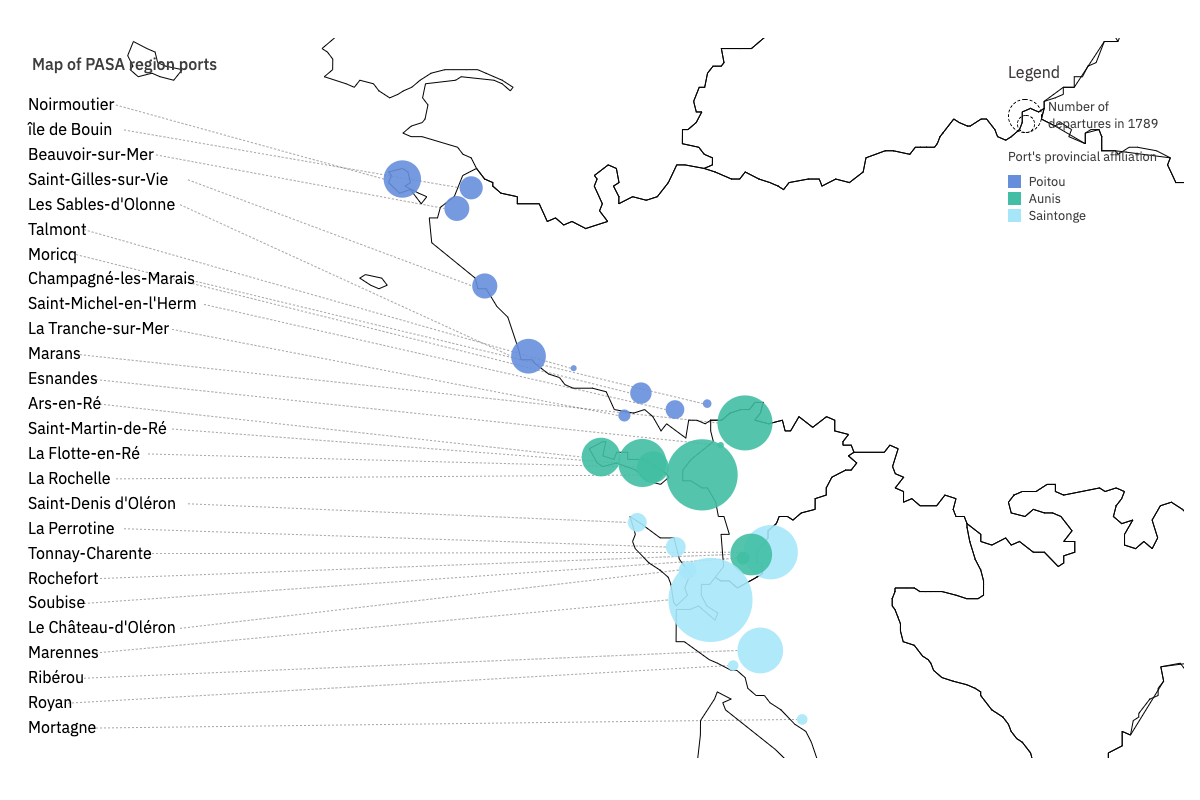
Map of PASA region ports
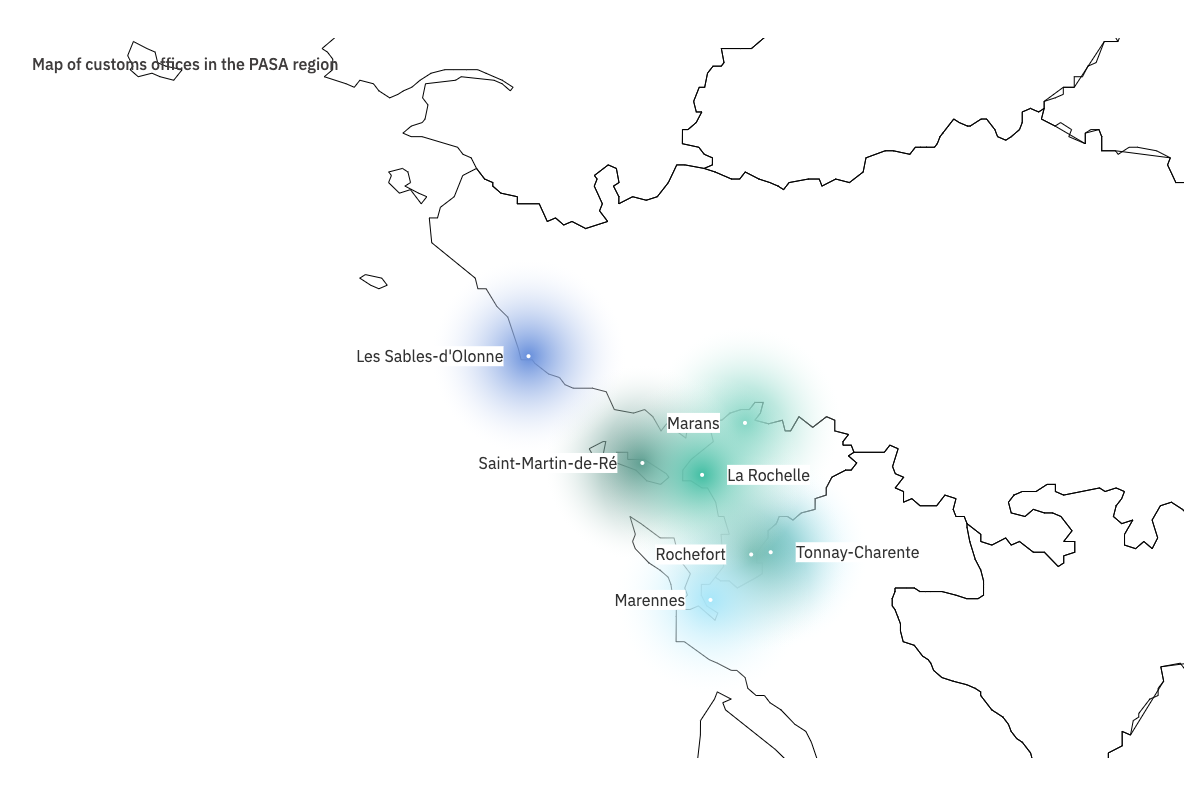
Map of customs offices in the PASA region
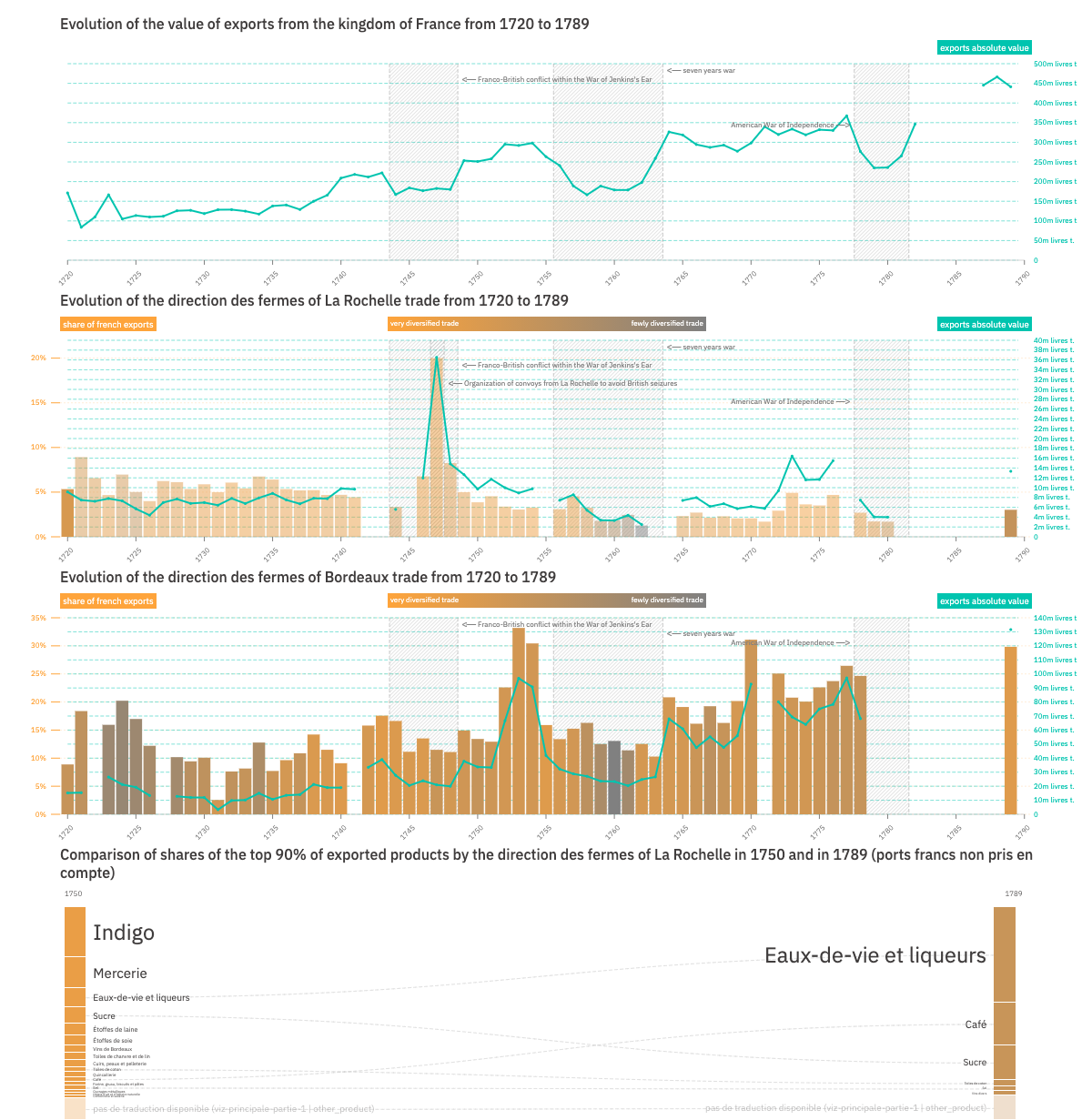
The decline of the La Rochelle region following the loss of Canada
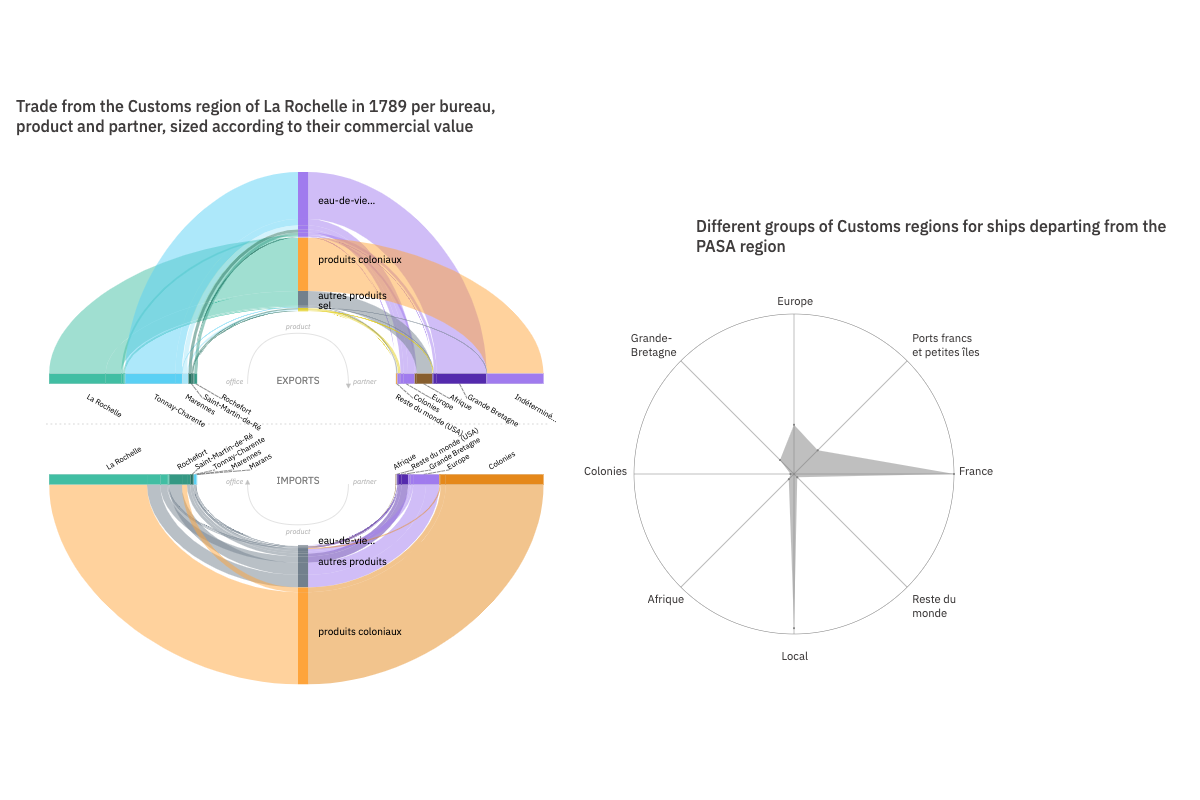
Highly specialized ports: the slave trade, the salt trade, and the brandy trade

La Rochelle, a dominating port but not a regional hub
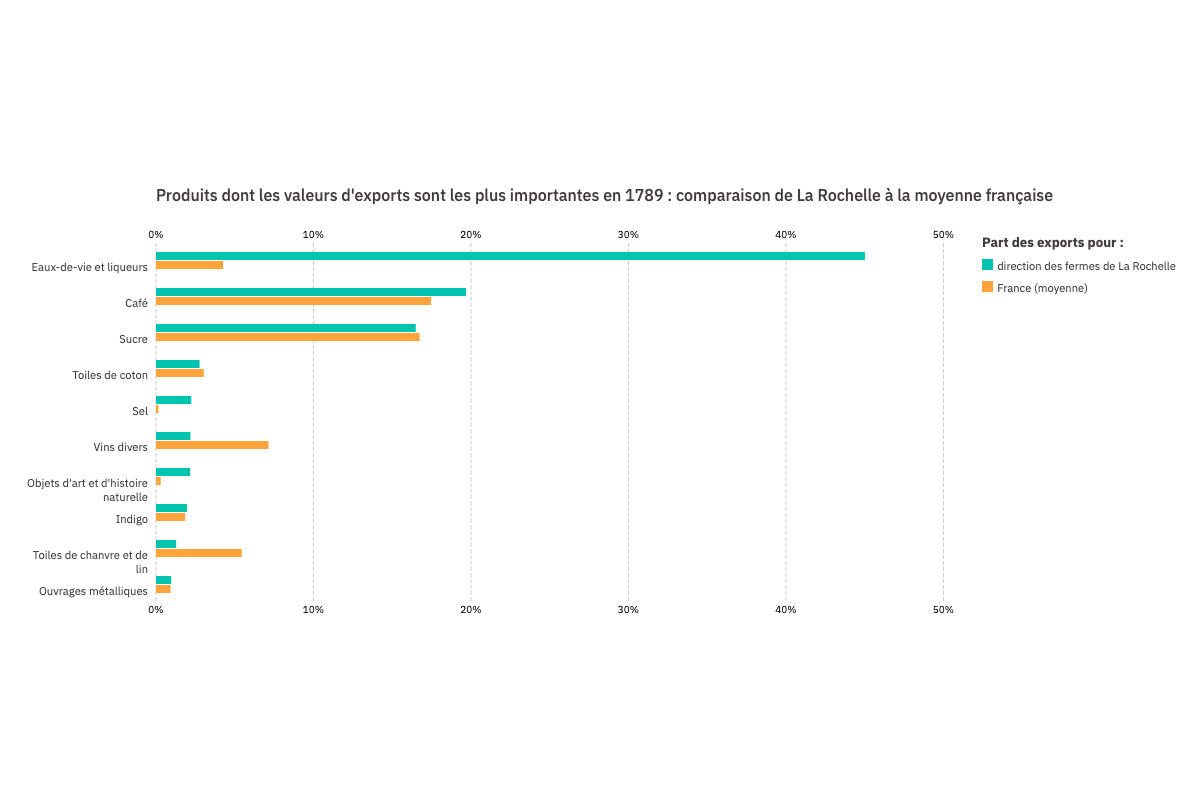
Products with the highest export value in 1789: comparison between the La Rochelle customs region and the French average
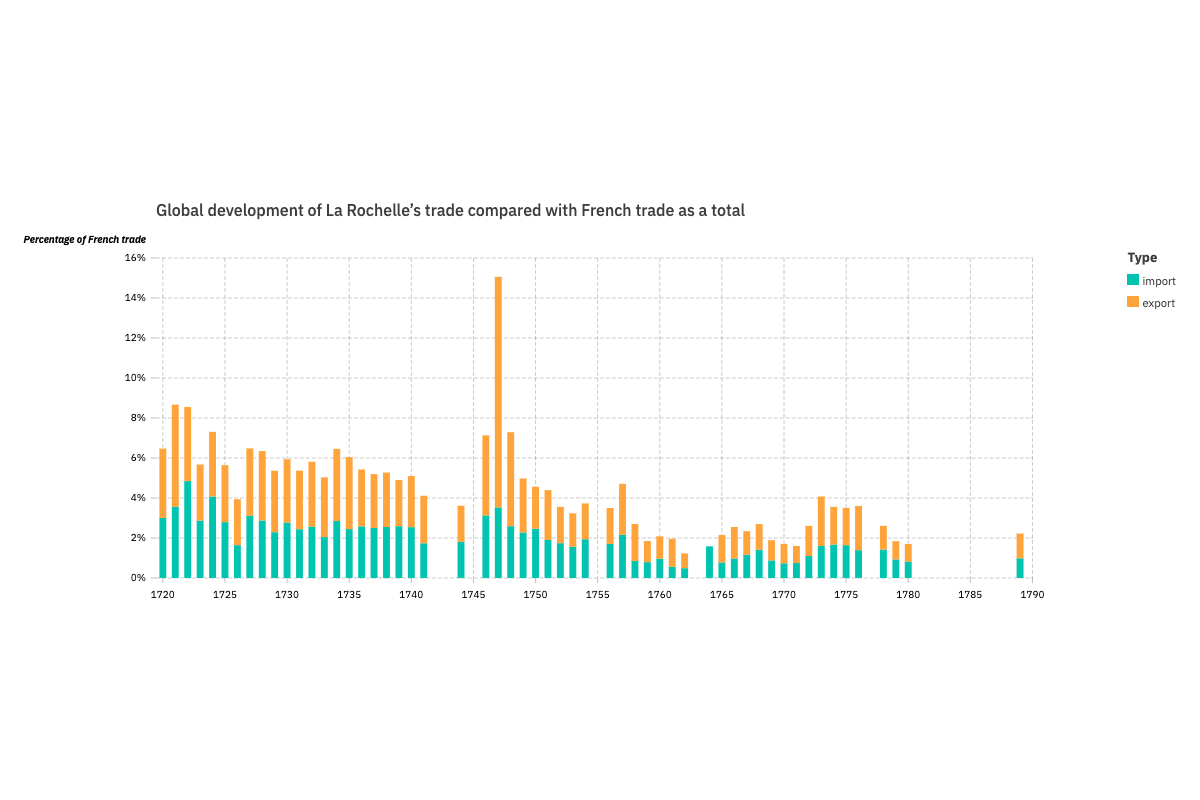
Evolution of the share of La Rochelle trade in relation to France as a whole

Home country of ships departing from the region in 1789
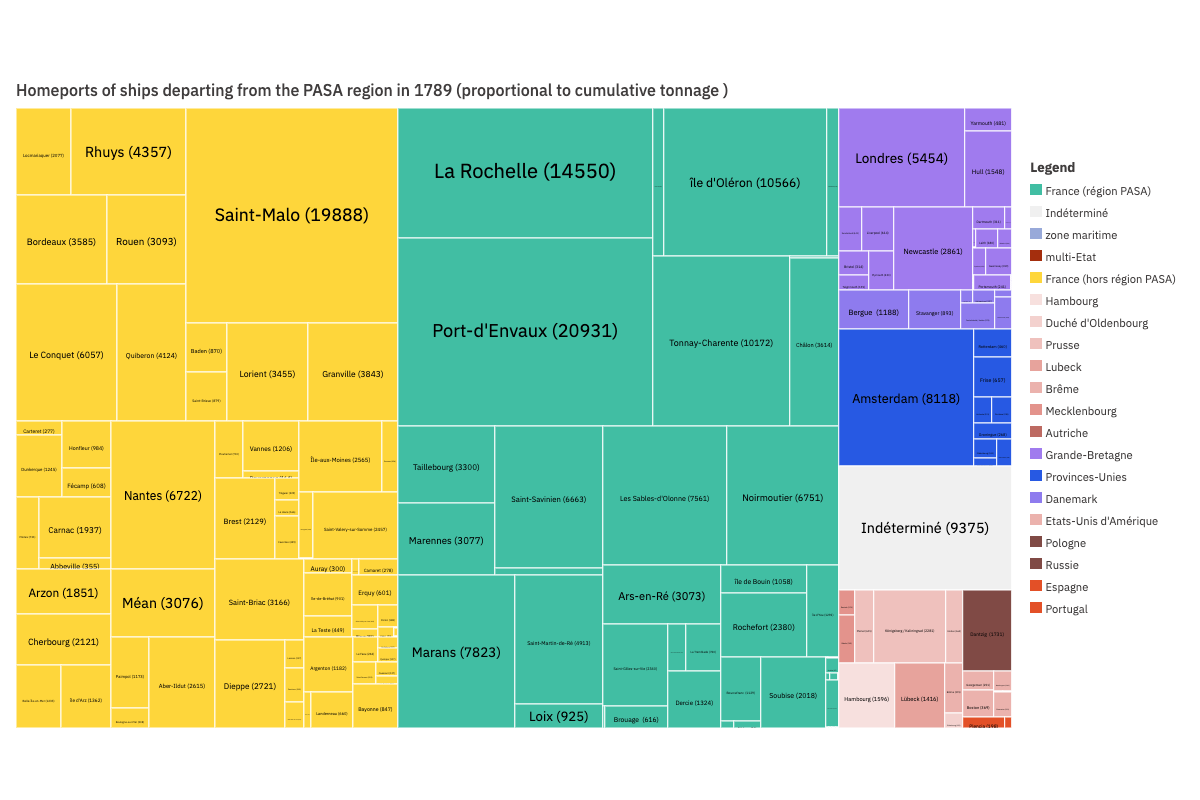
Home ports of ships departing from the PASA region in 1789
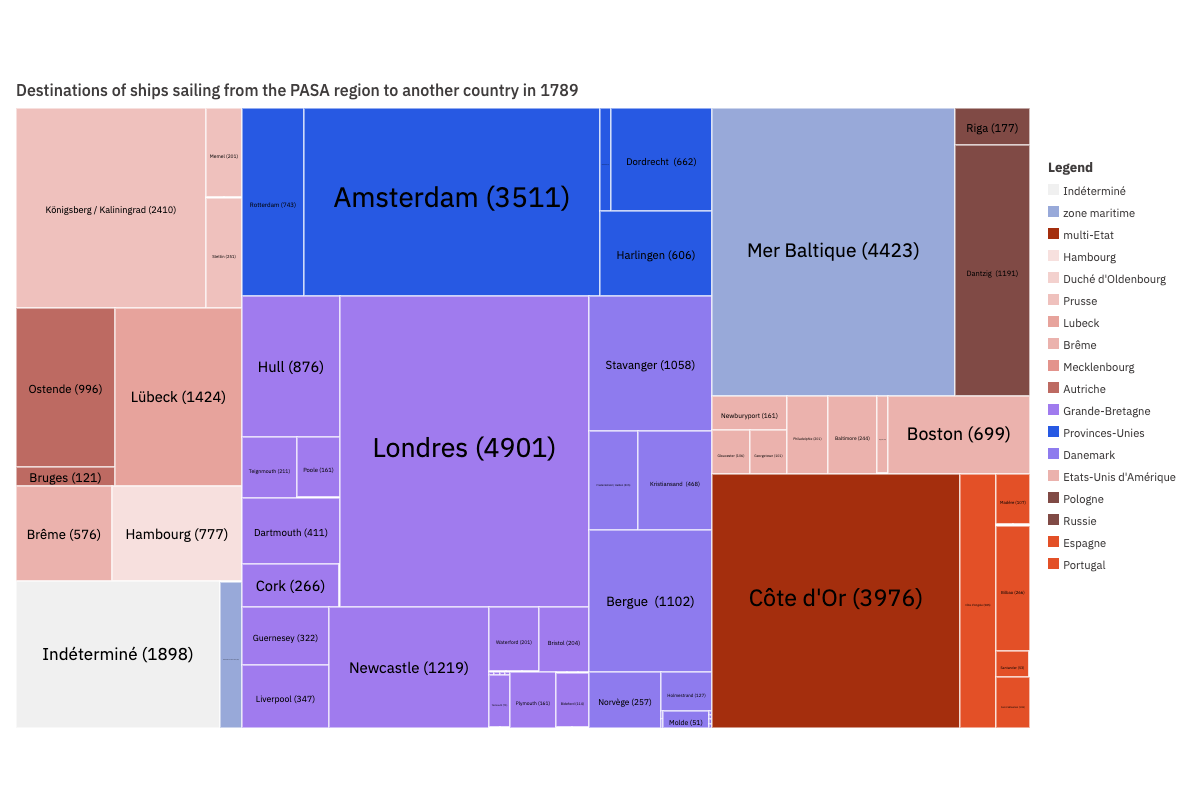
Destinations of ships sailing from the PASA region to another country in 1789

Home port of ships sailing to another country in 1789
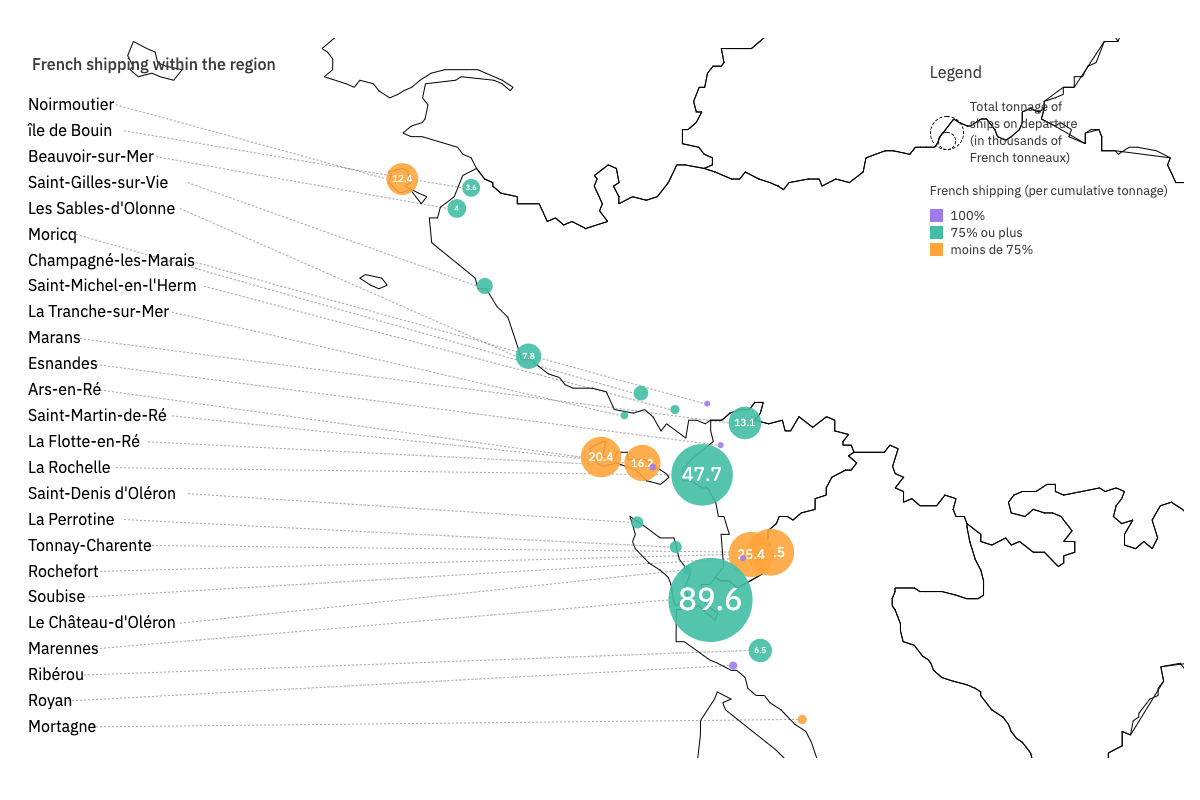
Share of French navigation in the region

Comparison of colonial, local, and other exports by customs office
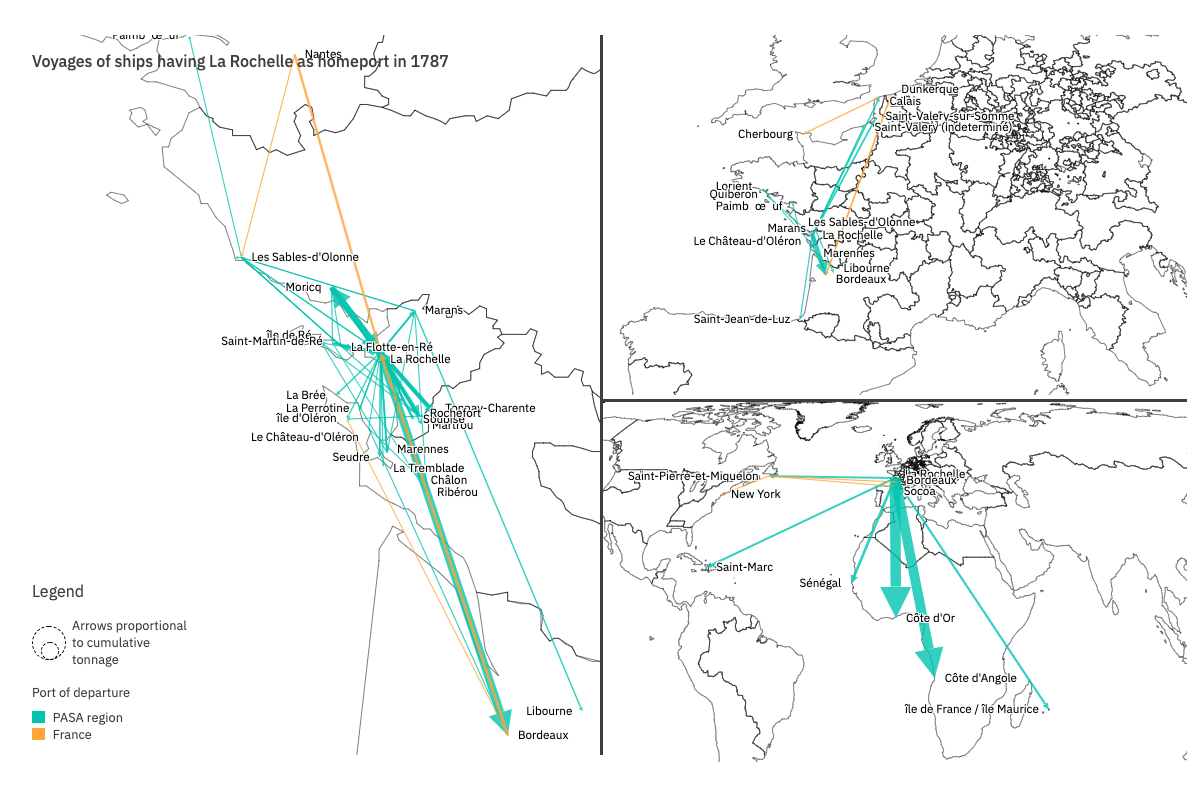
Flows of ships outfitted by the port of La Rochelle in 1787

Ports of departure of vessels transporting salt in 1789 from the PASA region, aggregated by cumulative tonnage
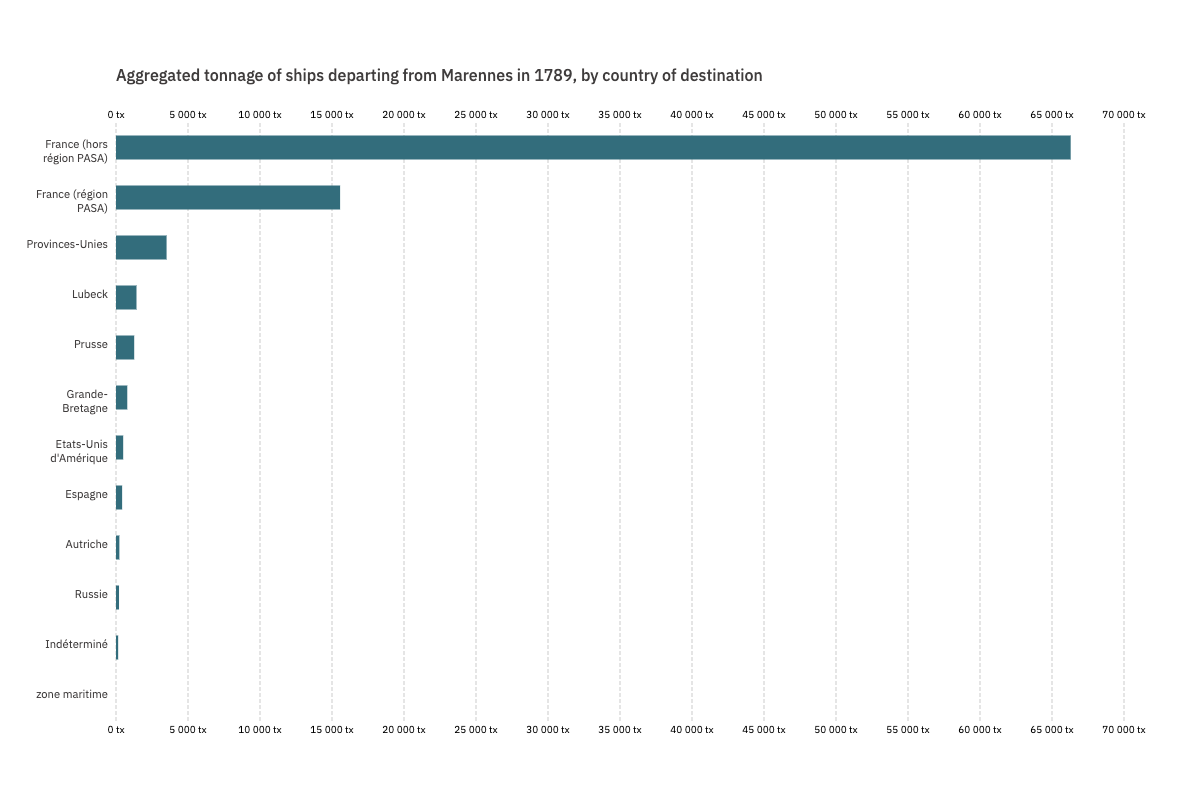
Destination of ships departing from Marennes in 1789, aggregated by country and by cumulative tonnage
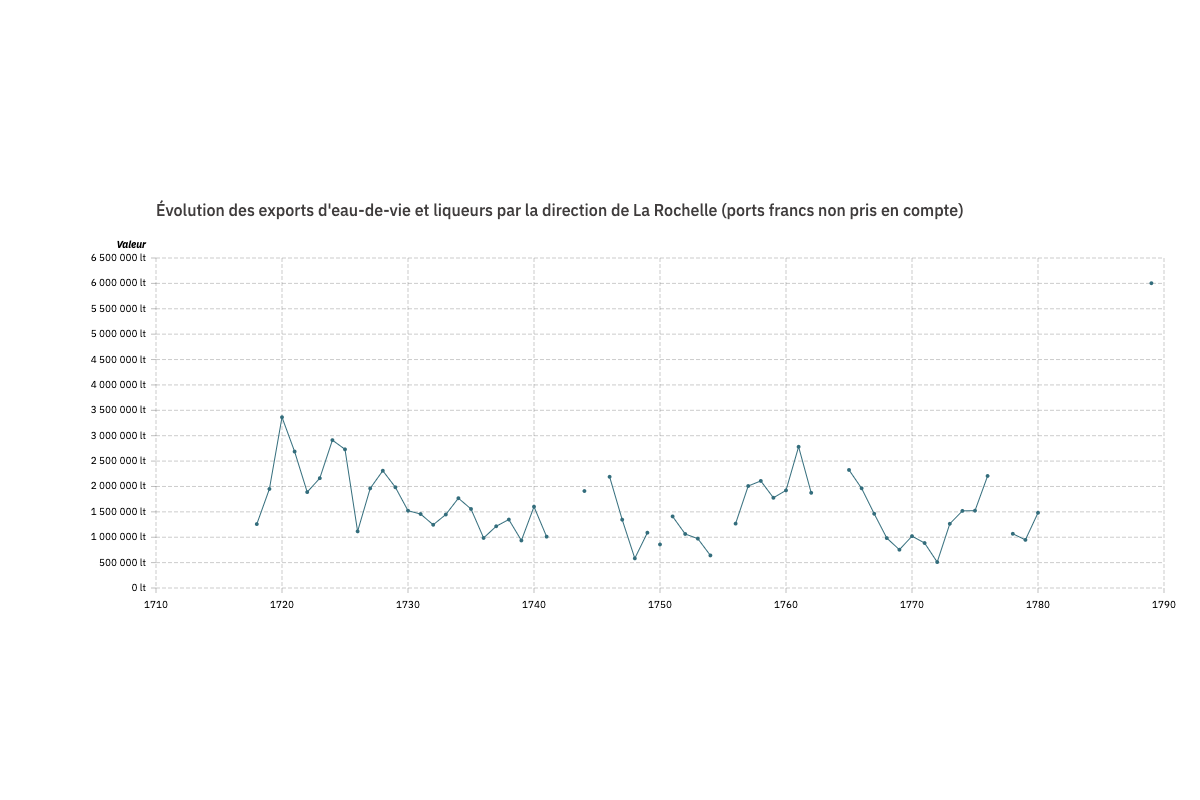
Evolution of brandy exports from the La Rochelle customs region (free ports not included)
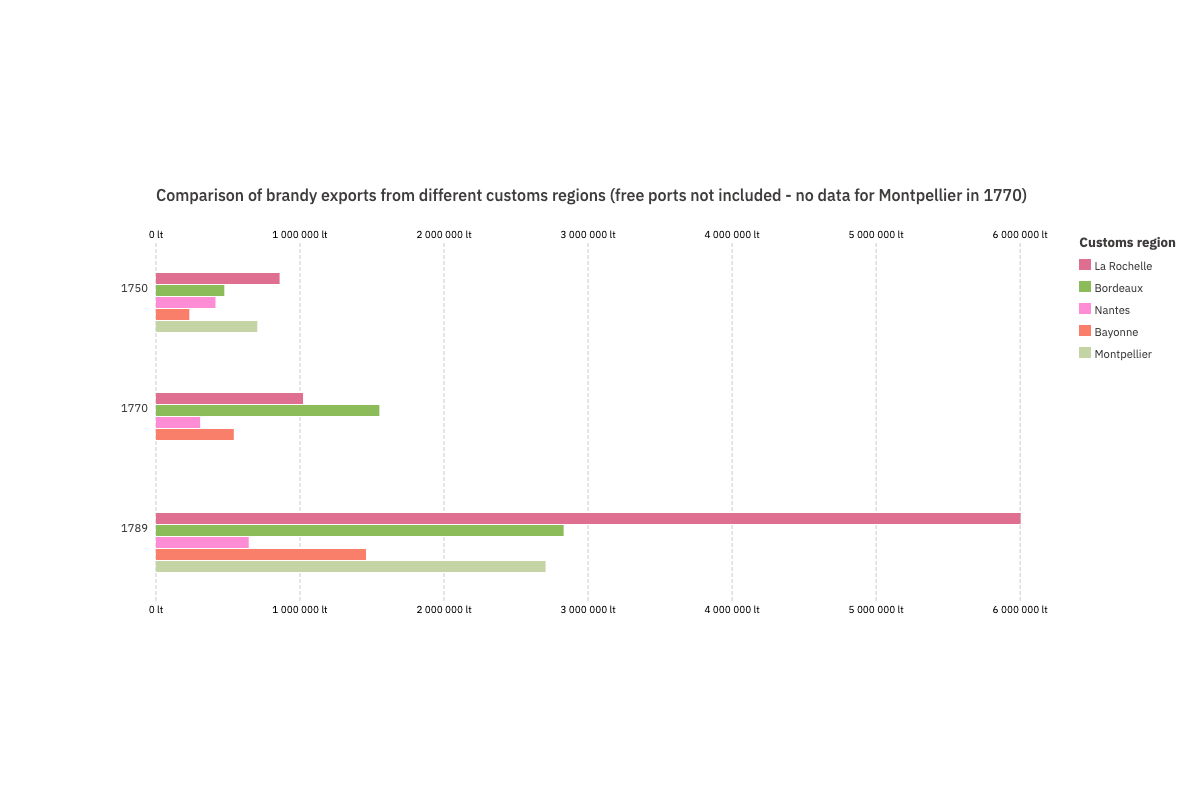
Comparison of brandy exports from different customs regions (free ports not included - no data for Montpellier in 1770)
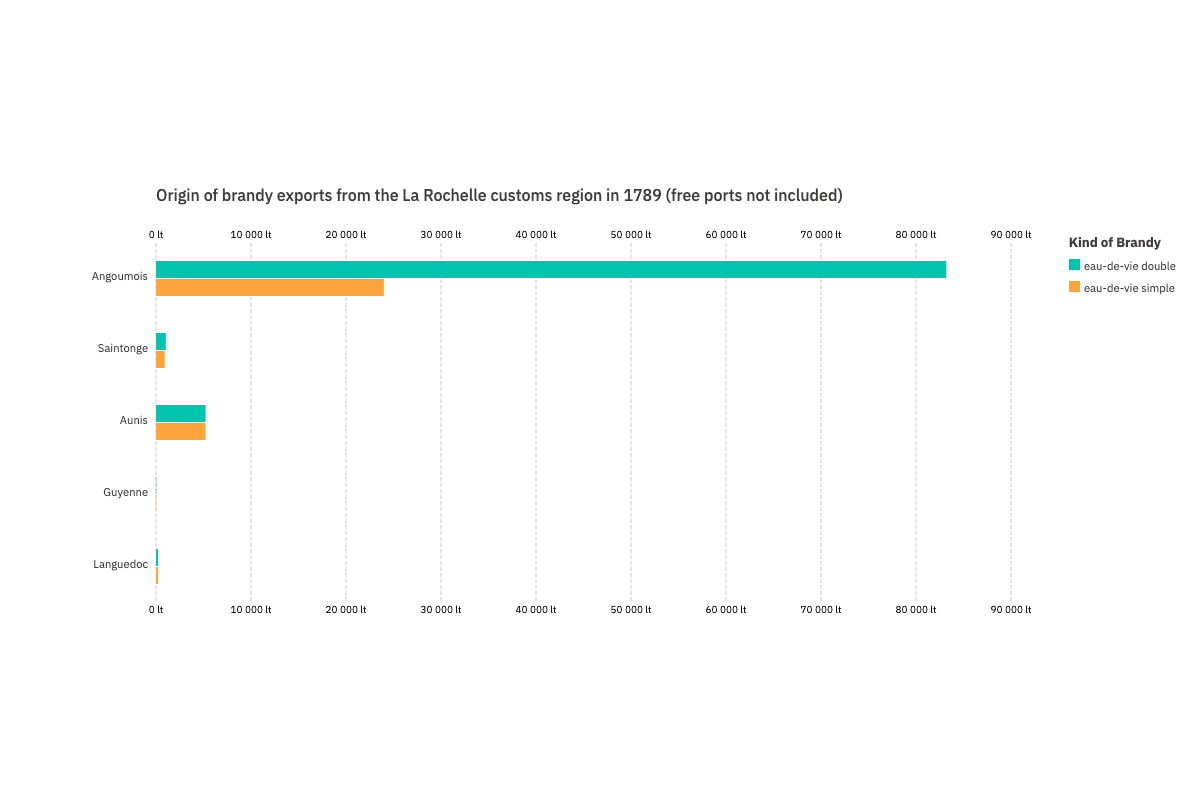
Origin of brandy exports from the La Rochelle customs region in 1789 (free ports not included)
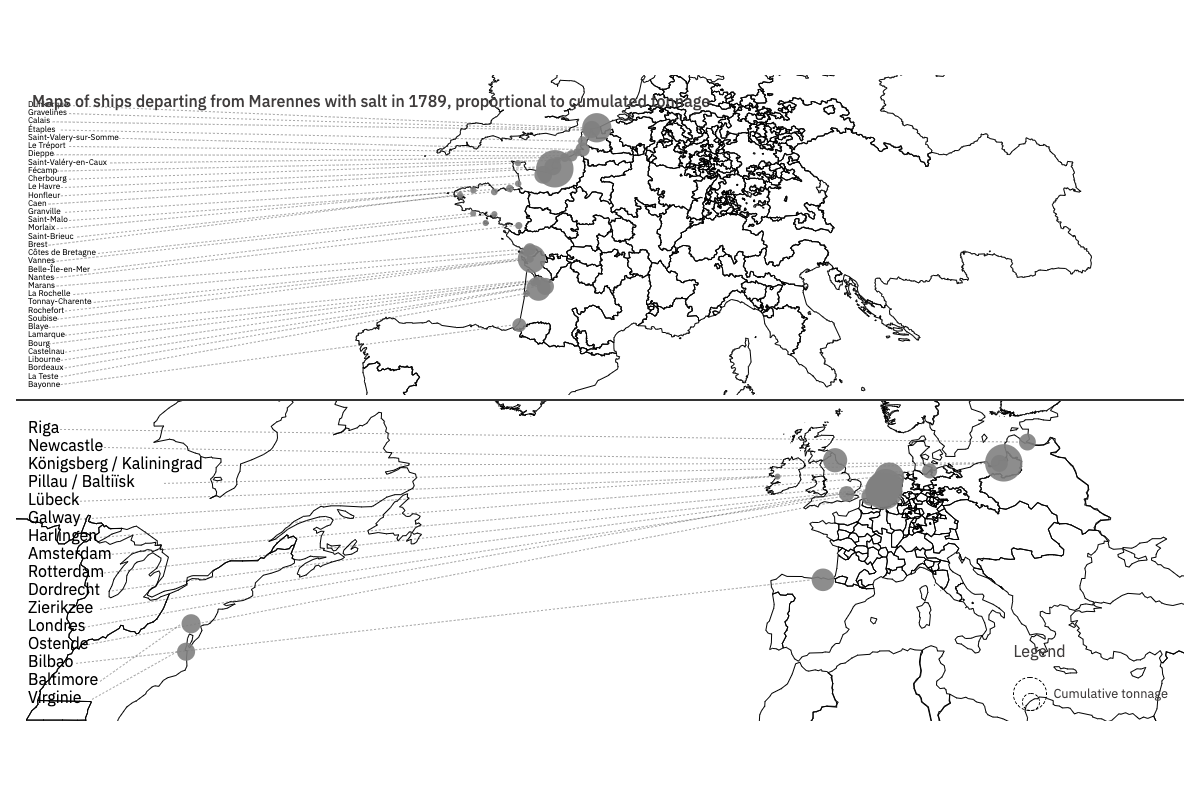
Maps of ships leaving Marennes with salt in 1789, sized by cumulative tonnage
Home port of ships sailing to another country in 1789
How were the data and visualization produced ?
Data was drawn from the Navigo database. We selected the ships that sailed from the PASA region to a foreign country in 1789. We then aggregated the data by home port and represented their cumulative tonnage.
How to read the visualization?
The chart shows the relative importance of the different home ports of ships sailing from the ports of the La Rochelle customs region to another country in 1789. We added up the tonnage of each trip (for the same ship leaving several times, its tonnage was multiplied by the number of trips). The rectangles contain the name of each port and the associated tonnage expressed in tonneaux (1 tx is approximately 1.44 cubic meters). The background color refers to each country at the time. The chart mainly shows that trade to foreign countries was dominated by foreign vessels, and especially by the British. Amsterdam, however, was the main home port. La Rochelle was only in second position, followed by London.